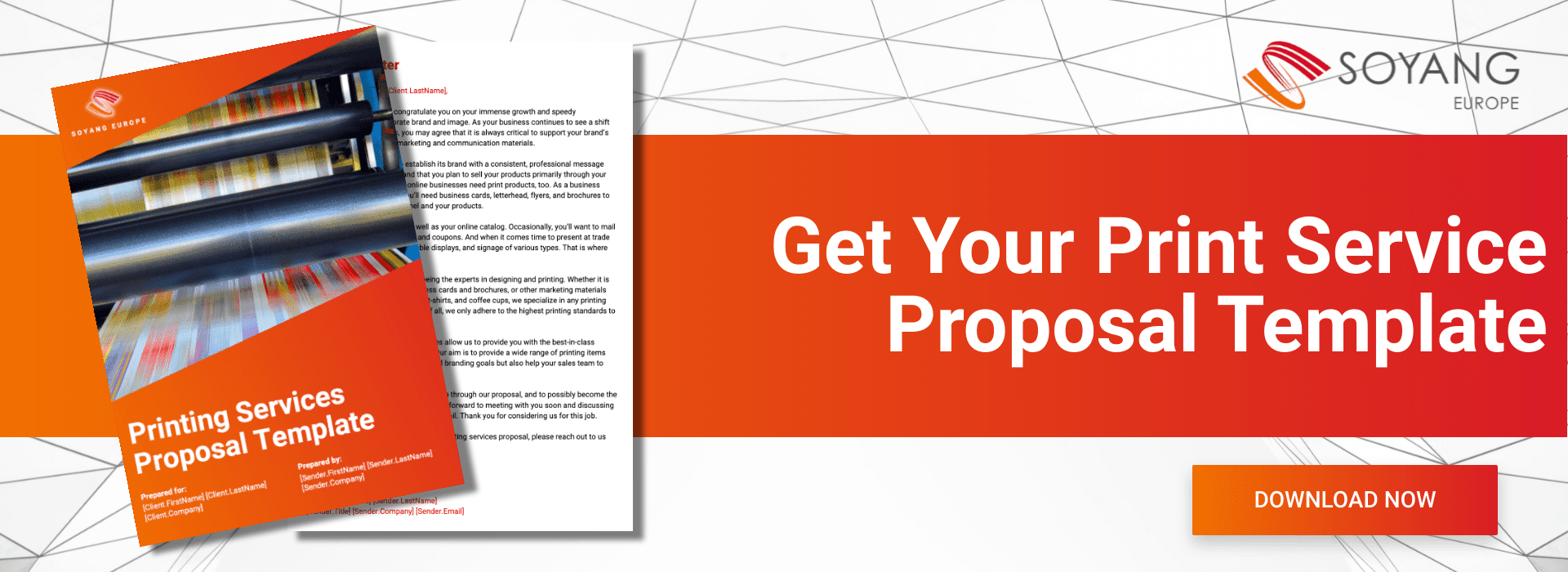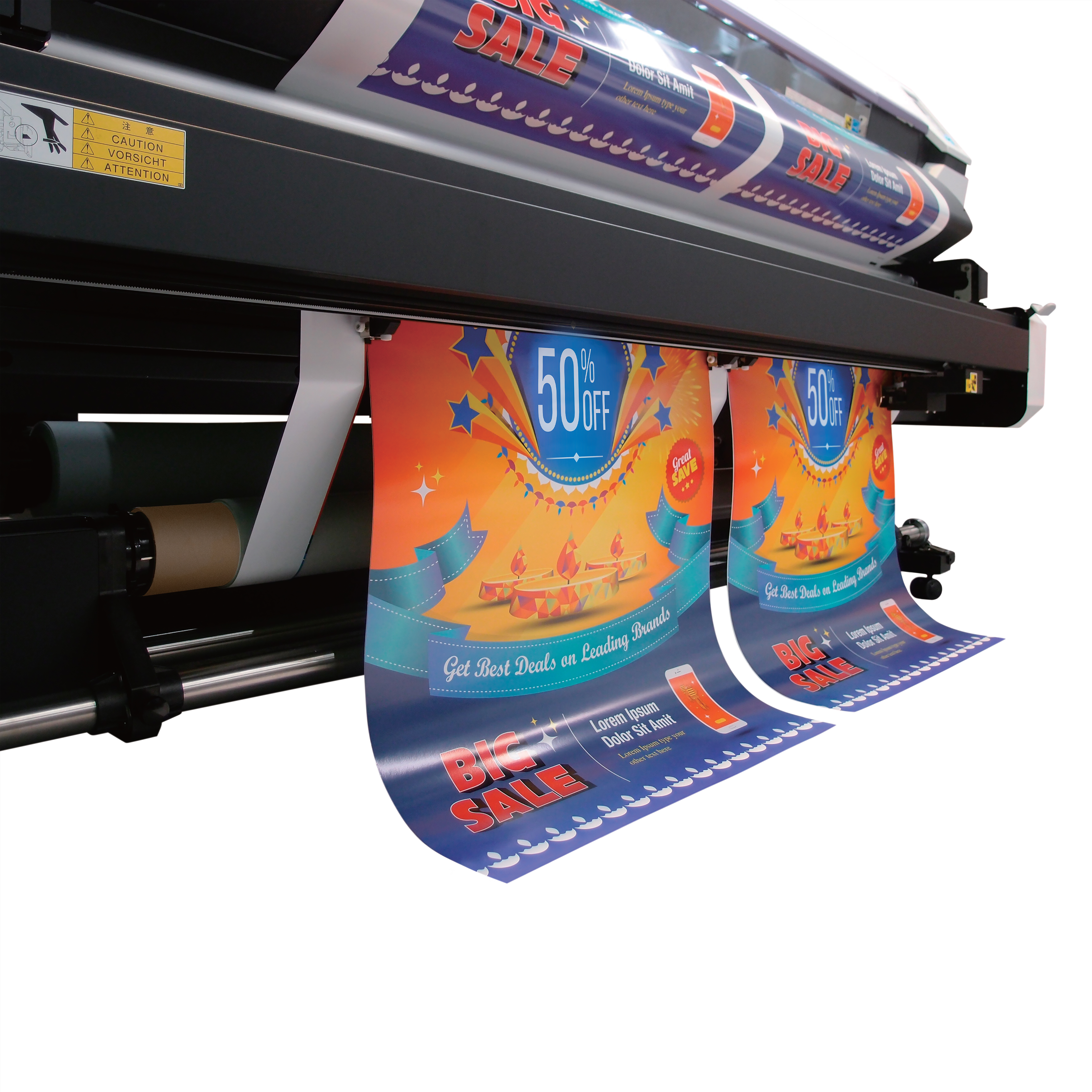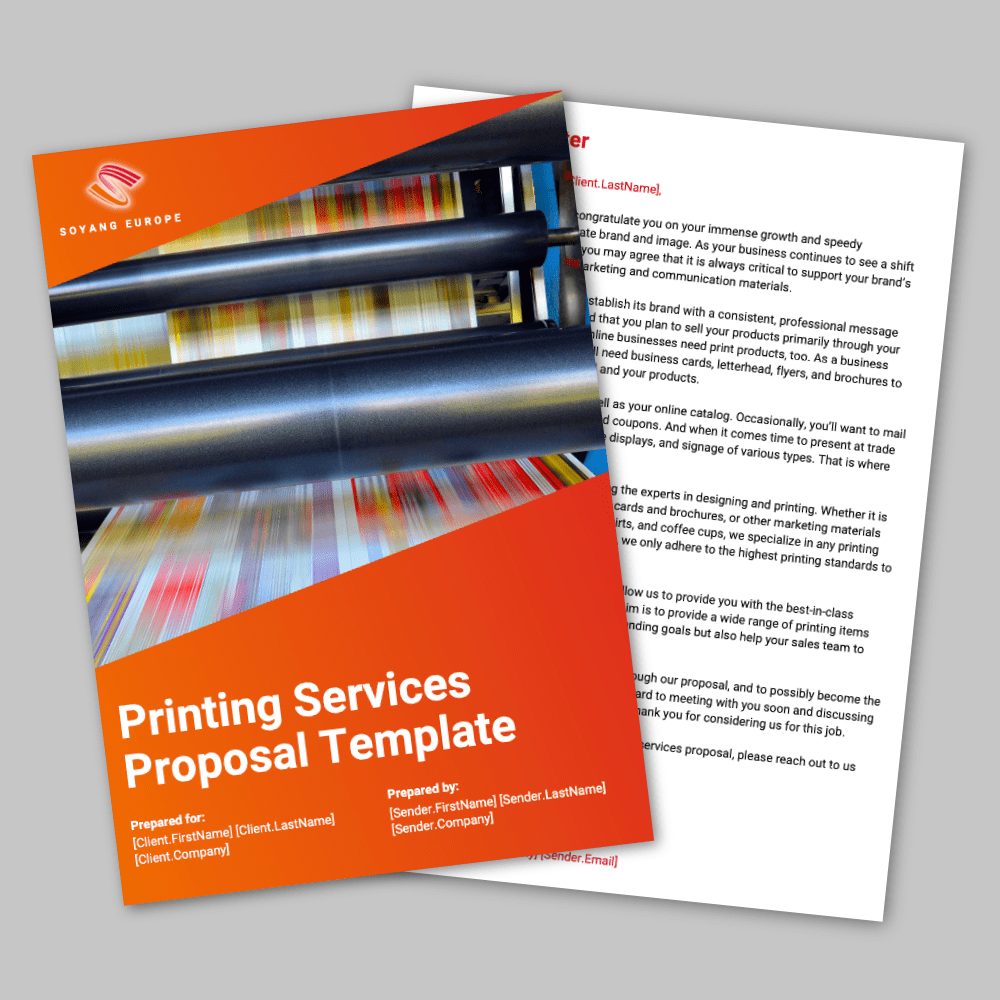The marketing has done its job. You have potential customers interested in using your print services. Now there’s just one more hurdle to leap: how do you write a print proposal that makes it easy for your customers to say ‘yes’?
What is a print proposal?
Your marketing strategies have worked, you’re getting leads and requests. A proposal is a response to those requests. While the client may not spell it out quite so specifically, that request is effectively: “How can you help me with this project?”.
Think of it in terms of a conversation. In fact, your printing proposal may be a written summary of an actual conversation you’ve already had with the client. Like all good conversations, it should be a little more in depth than a basic summary of the services you’ll provide and the price you’ll charge.
A printing company proposal is your chance not just to itemise the things you will do, but also to reiterate a little about who you are, what your client’s challenges are (and how you can help address them), and what makes you the right person/business to deliver this print solution.
It’s also your opportunity to set out key deliverables, so everyone has the same understanding of what’s expected.
A proper print proposal, therefore, should include:
- Client objectives
- Services you’ll provide
- Price
- The timescales you’ll work to
- The terms and conditions of your business
- A company overview
- Print samples
- Testimonials
- Next steps

Before you write your print proposal…
The likelihood is that your prospective client is going to base their decision on your proposal – that’s the whole point of creating it. While they may come back to you for clarification or to negotiate a service or price point, if they’re collecting several printing company proposals this may be your one and only chance to put your message across. So, if you want to sell more services and grow your printing business, you have to get it right.
It’s vital, therefore, to ensure you have all the information you need to do that.
Ideally, therefore, you’ll want to know the full print project specifications.
What’s the run size? What scale and material will the client require? If it’s a multi-page document, how many pages will there be? Are they full colour? If using paper, what weight of paper should you use? Will you need to emboss, laminate or add coatings? Will you need to use an adhesive (and if so, which type)? Will the end result be backlit?
It’s only by having this information that you can give a print proposal to the customer that is specific. The less information you have, the ‘woollier’ your proposal is likely to be and ambiguity can store up problems (for you and the client) later in the process.
Does it matter that you don’t have every detail of the project brief?
That depends on what information is missing. Not sure whether you’ll be expected to use direct or transfer sublimation as your print process? Give the client a call to check or, if you can’t confirm, ensure both options are covered in the proposal.
But where bigger issues are apparent – where deadlines, scales or quantities are uncertain, or where the sign off/rework process is unclear – don’t make assumptions. Only with a clear understanding of the project can you create a clear print business proposal for the customer.

Breaking down the print proposal process
Let’s consider some of those proposal elements in a little more detail:
Tailor your template
Writing proposals is time consuming, so a template that includes pre-written elements will be invaluable in helping speed things up. Always remember, however, to tailor the template to the specific client. No client wants to receive a proposal full of material that’s not relevant to them. And they certainly don’t want to see a proposal that so obviously a template that some other company’s name is accidentally left somewhere in the T&Cs!
Make your company overview count
It doesn’t have to be long, but a good company overview does more than reel off basic facts. It ties the nature of the business to the project you’re quoting for. If the proposal relates to wall coverings, for example, and your business has specialised in that since day one and has worked for major wallcovering clients, now’s the time to say it!
Create pricing with ‘wriggle room’
Even when the project brief is 100% clear, a single flat fee doesn’t give anyone much room to manoeuvre. Always look to offer a range of price options covering a low, medium and high service level. This will not only improve your chances of hitting an acceptable price point but will also indicate that you’re likely to be up for negotiating a bespoke price/service that falls somewhere between those bands.
Tailor your print samples
A generic set of print samples, like a template print proposal, will be far less effective than a set of samples tailored to the client, which clearly shows the materials, finishes, print method options already under discussion.
Pay attention to the terms and conditions of your business
Who signs off on your work? How many review rounds are you prepared to accept? What happens if the client is unhappy with the results? Making your processes clear at the outset is vital to protect yourself and reassure the client. Seeking legal advice about your T&Cs now can avoid far greater expense (and stress) later on.

How long should a printing company proposal be?
There’s a lot to pack into your document, but bear in mind your client is almost certainly short on time. You can make their life easier by ensuring each section is tightly written, getting to the point quickly and without waffle.
There is no set ‘right’ length for your print business proposal, but your client will quickly decide if it’s the wrong length.
Next steps
A good printing proposal should leave the reader in no doubt as to what they should do next. And the easier you can make it to accept your proposal, the greater the likelihood they will. An e-signature box at the end of your online document, for example, can encourage a client to commit.
Putting your print business proposal to a customer is your chance to make the case for why they should choose you. It’s worth taking the time to get it right, not just because it will bring new work your way, but because it can help ensure that work progresses smoothly.









